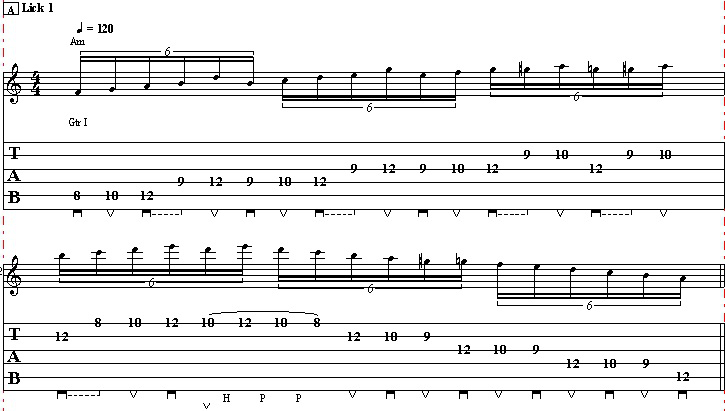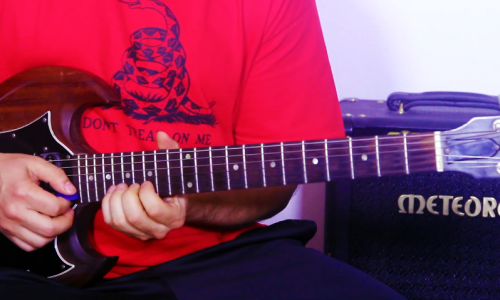Hey, how’s it going this is Shawn Daniel with Guitar Control, we’re going to tackle a Classic song “Reason to Believe” by Tim Hardin.
Click on the Tab button to follow the chords and tabs.
I’m not playing with the pick, I’m just using my fingers so you can do it however you want the first three chords are going to be C to G to C, something that Tim does he’ll do these hammer-on within an open chord, sometimes you’ll see this as a g7. I kind of like going back and forth playing C to G to C, so now if you’re hitting the rhythm first.
So if you’ve never played this style before it’s a really great way to kind of introduce yourself to these little flourishes hammer-on within a chord. I’m hitting that A-string on the C major shape, again 3a to D, an open G, 1b open. So I’m getting the A-string down hammer-on with your middle finger and then another down strum 1, 2, and 3, and it’s kind of this 1 bar reaction that we have starting off here.
If we have 4 bars the 1st bar, the 2nd bar is G, the next 2 bars the 3rd, the 4th bar are back to C, but the important thing especially if you want the kind of play like he does is to get that hammer-on on that C chord which you can use any chord or any song that uses the C major 1 and 3 and 1, 2 and 3 and 4, 1, 2 and 3 and go back to C. This is like the first part and after that we go two and a half into a G then back to C, you might notice that I’m playing what some people wouldn’t consider the traditional chord voicing because since we’re playing a lot of C’s, F, FS, and G’s, in this entire song with the exception of two other small times where a minor and a DD 7 chord come in.
The whole song is C F and G’s; it’s great to keep this position where I can play those three chords with just small movements of my hand so whenever I play C I’m playing it kind of traditionally. whenever I’m playing an F I’m going to get my pinky right behind my ring finger on the 3rd fret of the D-string and my middle finger on the 2nd fret of the G-string and then play the middle 4 strings of that half major chord instead of having to go C to an F to a G, and then from F you go to a G, by going like this, my ring finger on the 3rd fret of the low E-string middle finger is on the 2nd fret of the A-string everything else is open except for either the B 3rd fret or high E 3rd from whichever one you like. I think he’s probably using the one where the 3rd fret of the B-string, again that 1st part is just the G to C then we’re going to go F to G and back to C then we jump to this G7 back to G to C.
That next ring of 4 chords were going to break it in a group of 4 chords for this part D7 which you can always play a D major chord if it’s easier for you. Anytime you play it you see a D7 you can have the option of playing a D major chord if you want it’s up to you but D7 is the chord of choice. Ring finger 2nd fret on the high E-string, pointer finger first fret on the B-string, middle finger 2nd fret on the G-string, so it’s going to be D7 G, FC, 1, 2, 3, 4, 1, 2, 3, 4, G, and C, and we’ve got A, G, F, G.
Now that 2nd G in that isn’t going to be on the chord chart because it’s kind of optional but I want to talk about the A minor, so you’ve thinking this is the last part of the verse. A minor now again he’s kind of getting a lot of the root note first and then the chord after that. You don’t have to be used to it, but it kind of sounds a little bit more likely you’re a recorder version if you strike the root note and then I like to grab this G over this A minor look the reason I think it kind of goes along with the vocal a little bit better again it’s not going to be how the chords charts are something you could try to do anytime we have a G half, then back to G.
Because anytime you go from an A minor two and a half that’s an opportunity yet to hit that G in between the kind of walk that chord back through the scale and the rest of the song is just F, G, A minor, G, their beats one time so if we counted it 1, 2, 3, 4, 1, 2, 3, 4, 1, 1, 2, 3, 4, again and back to the 1st part E7 to a G, then F back to C, it’s in the key of C. Still I’d a minor G someone like you easy then read the app to a G a minor back to G start on C then G then back to C then go to half minor G back to C then you come to D7 these 7 minor G2 and back to C then the A minor walk to A the back to G then the F, G, A minor G partner someone like you makes it easy to use never thinking about mine.
There’s a couple of different techniques that you might want to use anytime you see that C major for that kind of playing, by the way if you haven’t listened to any music it is gently check it out because these little cool flourishes in open chords are something that he’s really he really does master for you. Great songwriter, great song, a longer kind of drawn-out chord progression that I think really works best if you have the lyrics handy.
Make sure to subscribe on our YouTube Channel and we’ll see you in our next video lessons, thanks for watching.
[ninja-popup ID=715]




